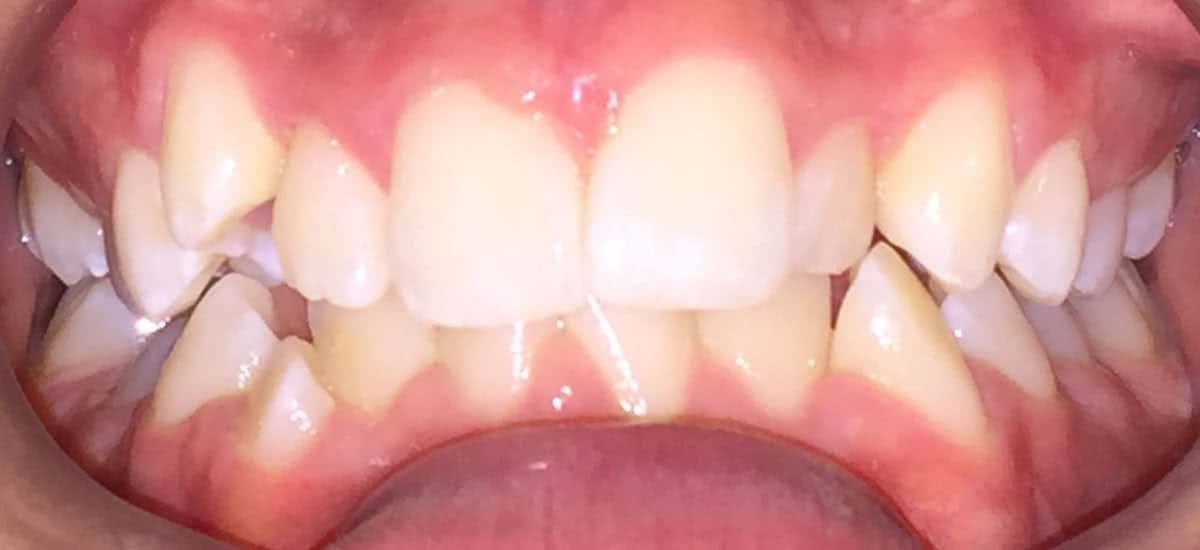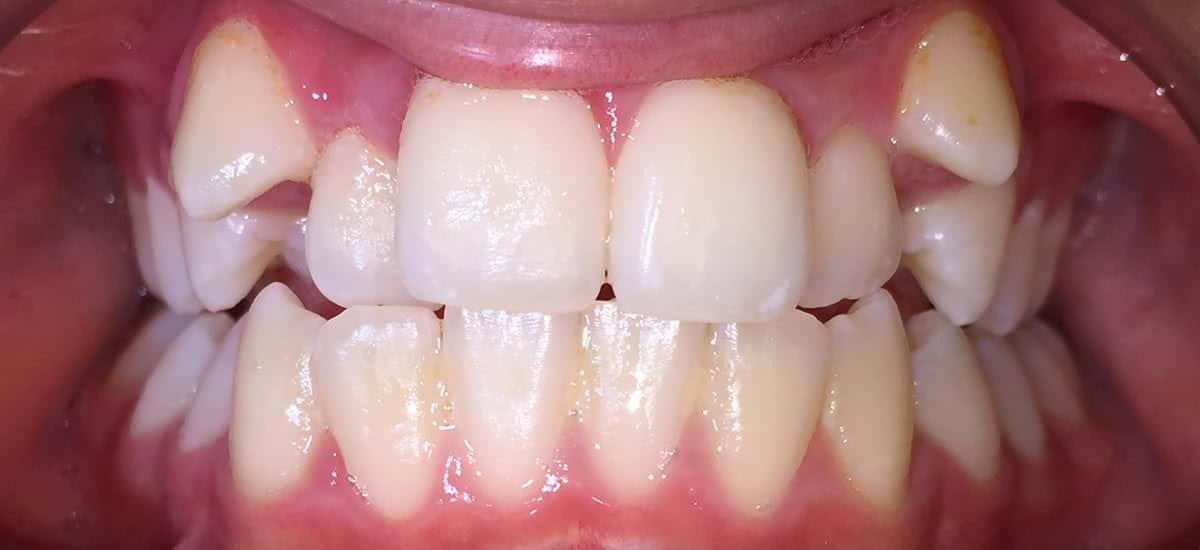Introduction
Crowding of teeth can happen with upper teeth and lower teeth and is simply where there is insufficient room for all of the teeth in the upper and / or lower jaw.
Research has shown that this is largely caused by the jaw not being large enough for the teeth, as opposed to the teeth being too large for the jaw. The condition is classified as a 'malocclusion', in other words an incorrect alignment of upper and lower teeth as the jaws close.
Crowding can occur even before adult teeth appear (in some cases from around the age of 6), but will generally progressively worsen with age if not treated.
Causes
A number of factors may cause, or contribute to, tooth crowding, including…
- Genetic (inherited) shape/development of the bone structure in the skull and the mouth.
- Thumb sucking.
- Extended bottle feeding/dummy use (especially after the age of 3).
- Breathing through the mouth.
- 'Tongue thrust' – this is where the tongue protrudes over the lower teeth, often when swallowing or talking (also referred to as 'reverse swallowing').
- Unusual tooth development, e.g. irregular tooth size or shape, extra teeth, impacted teeth.
- Jaw displacement.
- Asthma / other allergies.
- Cleft palate / lip.
- Prior dental work (especially if no longer fitting correctly).
- Prior dental trauma (e.g. jaw fracture or permanent teeth lost or damaged).
- Early loss of or decay in baby teeth which results in loss of space required by the second teeth.
If tooth crowding is not treated, it may cause the following problems…
- Premature wearing of teeth.
- Tooth decay.
- Gingivitis (early stage gum disease).
- Periodontal disease (later stage gum disease, also referred to as periodontitis).
- TMD (also referred to as 'TMJ') – Temporo-Mandibular Joint Disorder, where there is jaw joint pain, which can also cause headaches.
Treatment
In all cases the best treatment or treatments will depend on each individual, and the severity of the condition as well as the age of the person. As with many orthodontic approaches, the earlier crowding is discovered, the more straightforward the treatment – the ideal time to start treatment in children is between 7-9 years of age. Crowded teeth are generally treated with one (or more) of the following…
- Braces.
- Invisalign (an alternative to visible metal braces).
- Slow expansion devices.
- Retainers.
In severe cases, the removal of one or more teeth may also be recommended.
See also Spacing.








